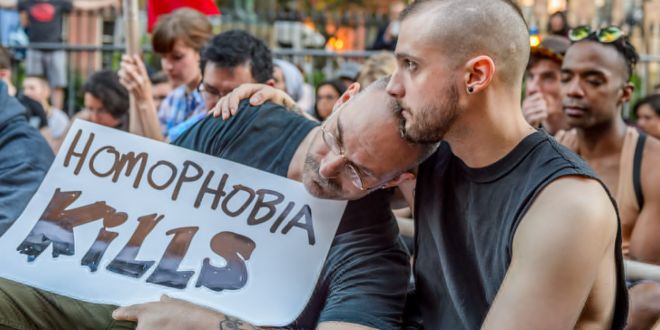In my last article, I discussed responses to homophobia. For example I described incidents where I had been victimized by gays and lesbians as a result of their transphobia, and how I deal with the anger by discussing those feelings with others. Notably, I had reached a point where I was tired of the anger. Rather than being angry at the person for what they are, I focused my anger on the person’s behavior.
The most important thing a person can do if they are in the process of being victimized is to stand up for themselves in a manner which does not incite further victimization. If a persons behavior is hurtful, sometimes the very best thing you can do is state so simply and clearly. In my own circumstances I found this strategy to be useful. Rather than harassing gays or lesbians for being different, I made a practice of telling them and others to take their transphobia down the street. Get it away from me.
Internalized homophobia in contrast to external homophobia comes from within and is targeted toward oneself. In other words it is a different monster we as transgender persons must contend with. Notably, regardless of sexual orientation, we transgender people face immense amounts of social pressure forcing us to identify as gay or lesbian even if we are not. Moreover, because sexual orientation issues are different than gender identity issues, that degree of differentness between us and them can be daunting. Its something we clearly recognize and feel, particularly when we must constantly reassure ourselves that societys characterization of us is wrong.
One of the ways people reassure themselves that they are not like others is to dislike qualities of differentness. How they reach that process is pretty easy to recognize. First there is an observation of someone’s differentness. Then, there is an internalized statement of I could never be or act the way they do. Finally, the person concludes that the other person’s differentness has a degree of dislikability and wrongness.
Somewhere, the dislike for other people’s differentness has got to stop. This includes qualities in ourselves that we do not like because we see it in others. Otherwise, if the process continues, the person not only begins disliking others differentness in others, sooner or later he or she will begin hating different qualities in him or herself. That is how internalized homophobia starts. Notably all persons have some natural diversity when it comes to sexual orientation. This is so just as people have very diverse expressions of gender identity. When we become dishonest about the differences in ourselves as well as others we become out of touch with who we are as humans.
Occasionally I have clients who feel concerned about having internalized feelings of homophobia. They hate these feelings, but they don’t know how to get rid of them. I find myself telling them the same messages I tell myself. Getting rid of homophobic feelings is as much as a process as acquiring a sense of homophobia was in the first place. The first step is admitting and recognizing such feelings exist. The next step would be to figure out what brings these feelings up.
A variety of things can bring up internalized homophobic feelings. Ask yourself a question. Does a particular behavior or mannerism in yourself bother you? Does looking in the mirror and seeing a man in a dress bother you? Is there a particular tone of voice which makes you sound, er um, different? If so, and you are associating these behaviors, ideas or feelings with gays or lesbians…you may be having some internalized homophobia which needs resolution.
One thing which may be helpful in resolving internalized homophobia, is to take a step back from yourself mentally and consider how your appearance, ideas and behaviors compare to others in your new or self-determined gender identity. How do you differ? How are you similar? Then compare your appearances, ideas and behavior with those of gays and lesbians. Ask other transgender persons about their experience sorting through these issues. Ask non-transgendered people how they feel about the subject.
After having a chance to compare yourself with others then take a another look in the mirror. Ask yourself more questions. How can I love that person in the mirror? What healing is needed to help build my confidence? How can I feel good about myself even if someone mistakes me for a gay or lesbian? Surprising, these basic human questions are the same ones that gays and lesbians must ask themselves when feeling with internalized homophobia. This is true for those transgender men and women who also identify as gay or lesbian. Somehow none of us escape the process of looking into the mirror, comparing ourselves with others, and continually defining our gender identity and sexual orientation.
Copyright 1998
by Gianna E. Israel
 Lesbian, Gay, Bisexual, Transgender & Intersex News Lesbian News, Gay News, Bisexual News, Transgender News, Intersex News, LGBTI News
Lesbian, Gay, Bisexual, Transgender & Intersex News Lesbian News, Gay News, Bisexual News, Transgender News, Intersex News, LGBTI News




